WHAT IS A PUBLIC ADDRESS SYSTEM?
A public address system is one that allows a single user or group of users to address a larger public number of people with the use of a microphone (or other audio source), a mixer, amplifier and loudspeakers typically in a venue or building.
A public address system is one that allows a single user or group of users to address a larger public number of people with the use of a microphone (or other audio source), a mixer, amplifier and loudspeakers typically in a venue or building.

The components of a public address system are different depending upon the size and type of venue or building and the number of people a system needs to address.
Sound Directions are experts in this sometimes challenging area and design, supply and support public address systems.
WHAT IS A SOUND REINFORCEMENT SYSTEM?

Sound Reinforcement (much like a public address system) is the art of using an audio system to enable an audience (of one or more) to listen to a speech or musical performance (which may be live or pre-recorded) with clarity, that they may not otherwise be able to hear due to physical (building or other) or people (large numbers) constraints.
A well designed sound reinforcement system should deliver a constant sound pressure level (SPL) over the entire listening area as well as a constant frequency response. This should be achieved by ensuring sound signals are delivered in proper directivity patterns using point source or line array loudspeakers accurately aligned and positioned to ensure phase interferences between each are kept to a minimum.
Sound Directions are experts in sound reinforcement systems for any size venue including stadia, concert halls, theatres and public buildings.
WHAT IS A VOICE ALARM SYSTEM?
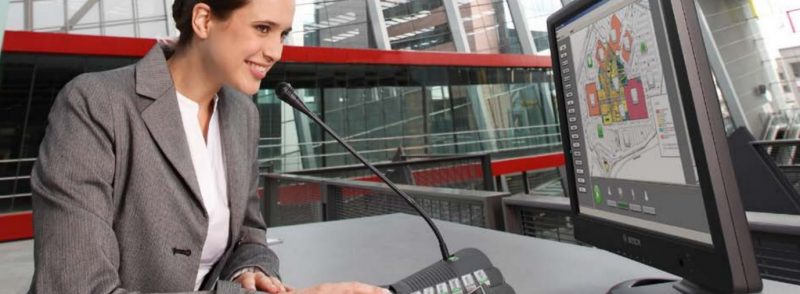
A voice alarm system (sometimes referred to as a voice evacuation system) is very similar to a public address system but it is installed with the safety of staff or general public in mind.
It is a system that assists in the effective evacuation of an area or building during a fire, bomb alert or other emergency.
Research has proven that in an emergency people will react without confusion or panic if they receive a clear, intelligible message. These messages are stored within a voice alarm system
A voice alarm system has to work when needed – during an emergency – and is, therefore, fully monitored at all times. It is also backed up by batteries which are fully charged and checked constantly; this will ensure that, even during a mains power failure, the system will continue to operate.
Sound Directions are experts in voice alarm system and can design, supply and support voice alarm systems.
WHAT IS A BACKGROUND MUSIC SYSTEM?
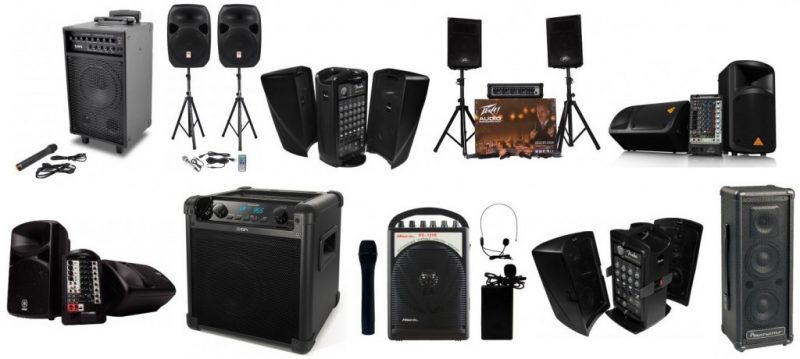
A Background Music System in a commercial environment is a music playback system that plays continuous background music, normally via a distributed public address audio system. It may include an element of zoning so volume levels are suitable for each area or zone of an environment.
The music selection for a commercial background music system may also be profiled for a particular brand, venue or building so music that plays is suitable and automatically updated for the venue. Repeats within such a system are minimised (which helps staff and visitors) and can be interspersed with live broadcasts, adverts and if required staff training/company announcements.
Sound Directions are experts with commercial background music systems and can advise, design, supply and support in this challenging area.
WHAT IS THE DIFFERENCE BETWEEN A BGM SYSTEM AND A HIGH SPL SYSTEM?

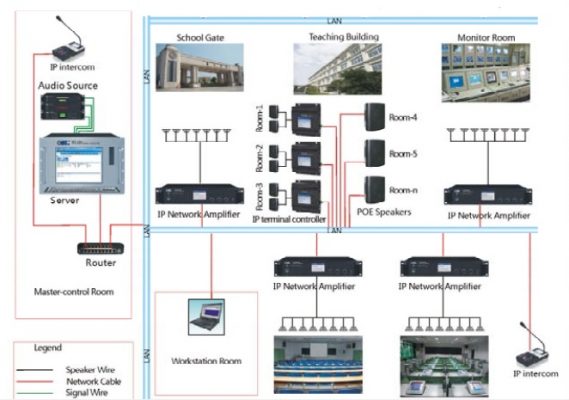
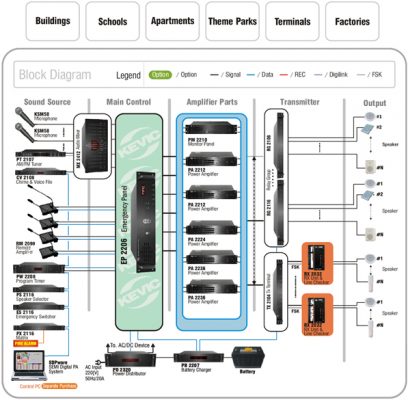
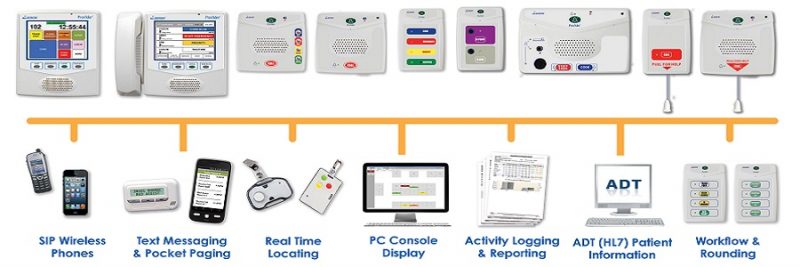
High Sound Pressure Level (SPL) systems, often referred to as foreground systems, used in stadia, concert halls and other large venues differ quite dramatically from a system normally used for background music/paging.
The human ear has a weaker sensitivity to bass and treble frequencies at lower levels, subsequently electronics manufacturers often design products with a ‘loudness curve’ frequency response i.e. products that add in bass and treble frequencies to the sound at low-levels.
These products are often used in sound reinforcement system designs for background music systems. However the ‘loudness curve’ often cause intelligibility problems for background music systems that are also used for paging or voice evacuation systems.
Adding low-frequencies to speech transmissions tends to make them sound muffled, distant and often unintelligible or to put it another way, the resulting sound transmitted often sounds bass and treble heavy. (I’m sure we have all experienced an announcement at a railway or airport that we just cannot hear or understand).
In addition lots of loudspeaker manufacturers have been driven by a culture in the last twenty years to produce as much bass output from as small a loudspeaker cabinet as possible. This has driven some manufacturers to tune loudspeakers towards a non-linear (non-flat frequency response) which means the sound from the loudspeakers does not sound neutral.
Again this can cause intelligibility problems for paging and voice evacuation systems.
For high SPL (foreground) systems in large venues, loudspeakers and electronics with a non-linear frequency response are not acceptable.
It becomes much more critical the starting point for tuning a high SPL sound reinforcement system, that typically plays out much louder and at higher SPL’s, is from a neutral, flat response. This allows sound engineers to adjust the tuning of a high SPL system to cater for acoustic characteristics of a building, the varying size of the audience and even atmospheric conditions in an outside area or venue.
It is therefore quite critical that the right components are chosen in the inital design of a sound reinforcement system depending on whether it is for use in a background music, paging or high SPL application.
Sound Directions are experts in designing sound systems for background music, paging, voice evacuation and high SPL applications.
WHERE ARE THESE SYSTEMS USED?


